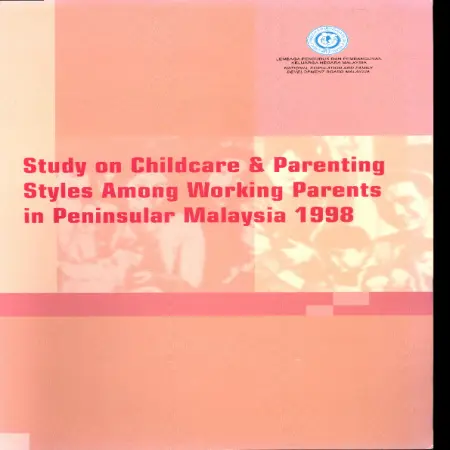TOPICS
Results for Topics : "Childcare"
|
|
I'm In Control module (Parent's Edition)
Item Type: Module
Editor:
Year: 00/00/2000
Abstract: The I'm In Control module (Parent's Edition) has been developed to complement the I'm In Control Module developed for teenagers. The module objectives are to enhance parent's knowledge on the physiological, biological, physical and social development of adolescents, to increase parenting knowledge and skills on adolescent sexual and reproductive health and to provide skills on enhancing parent-teen relationship.
|
|
|
|
|
|
Study on childcare & parenting styles among working parents in Peninsular Malaysia 1998
Item Type: Research Report
Editor:
Year: 00/00/1998
Abstract: The Study on Childcare and Parenting Styles among working Parents in Malaysia is one of the three research issues on the family that has been identified by the Ministry of National Unity and Social Development under the "Pelan Induk Tindakan Sosial (PINTAS)". This survey is timely in view of the many challenges faced by Malaysian families who have been affected directly or indirectly by modernisation, urbanisation and industrialisation as a result of socio-economic development. Female labour force participation has increased from 37 per cent in 1970 to 42 per cent in 1991 and is expected to reach 52 per cent by year 2000. The objectives of the study were: • To study the current situation in childcare arrangements among working parents and to elicit suggestions from them regarding improvements in childcare. • To study parenting styles among working parents and to make recommendations for better parenting practices. • To use findings from the study as an input towards designing strategies and programs for the betterment of families. • To obtain indicators on childcare and parenting for the monitoring of goals and targets in the National Plan of Action on Children.
|
|
|
|





